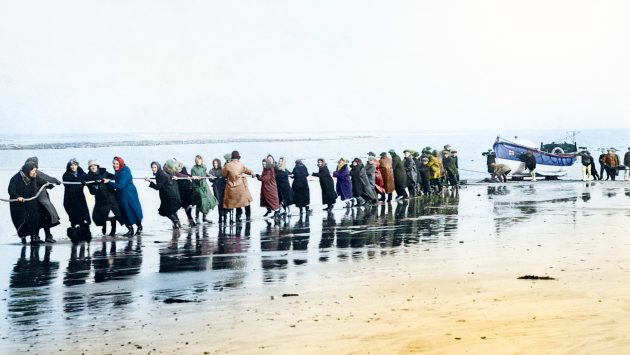The Royal National Lifeboat Institution (RNLI) officially celebrates its 200th birthday on March 4. Many sailors are truly thankful for the thousands of selfless rescues by lifeboat crew around the coast of Britain - the brave men who head out to sea when sailors turn back to port.
The RNLI was founded in 1824 by Isle of Man resident Sir William Hillary, has saved a tremendous 146,277 lives in two centuries – an average of two lives saved every day for 200 years. Today, the RNLI operates 238 lifeboat stations around the UK and Ireland and has seasonal lifeguards on over 240 beaches.
Two centuries have seen extensive developments in the lifeboats and kit used by the RNLI – from the early oar-powered vessels to today’s powerful high-tech boats, built in-house for the charity.
‘It is through the courage and dedication of its incredible people that the RNLI has survived the tests of time, including tragic losses, funding challenges, two World Wars and, more recently, a global pandemic,’ said RNLI Chief Executive Mark Dowie.
‘For a charity to have survived 200 years based on the time and commitment of volunteers, and the sheer generosity of the public donating to fund it, is truly remarkable.’

Coastguard Search and Rescue helicopter, winch man and RNLI lifeboat, Britain, UK. Photo: RNLI
There have been some particularly notable rescues in the charity’s history. The RNLI’s biggest single rescue was on 17 March 1907, when the 12,000-tonne liner SS Suevic hit the Menheere Reef near Lizard Point in Cornwall in a strong gale and dense fog. RNLI lifeboat volunteers then rescued 456 passengers, including 70 babies.
For sailors, the 1979 Fastnet race is particularly poignant. Then 13 RNLI lifeboats set out in hurricane conditions to rescue the many missing yachts of the 303 fleet, towing in at least 20 yachts and landing survivors. There was no GPS, no terrestrial navigation, and with many vessels with no radio communications, it meant locating those in trouble was extremely difficult. Five boats were lost, 15 sailors drowned and three of the rescuers also lost their lives.
Even in the past year, lifeboats on the south coast have rescued more than 3,000 people making hazardous journeys across the English Channel as the numbers making the crossing top 100,000.
Six RNLI volunteers were recognised in the New Year’s Honours List.
RNLI founder Sir William Hillary witnessed the treacherous nature of the sea first-hand when living on the Isle of Man. In the early 19th century, there were an average of 1,800 shipwrecks a year around Britain’s coasts. Rescue services did exist in some places, but the danger of shipwreck was an accepted way of life at sea.

The Baltimore RNLI lifeboat crew taking part in a major rescue operation in 2017 when a 100 ft yacht capsized during the famous Fastnet race with a crew of 21 onboard. Five of the crew were missing when the lifeboat arrived on scene while the remaining 16 were huddled together on the upturned hull. Photo: RNLI Nigel Millard
Hillary, however, wanted to take action. He appealed to the nation in 1823, but without success. He persevered, gaining the support of several philanthropic members of society, who put their names to the charity at a meeting in the City of London Tavern on 4 March 1824.
‘Twelve resolutions were passed at that meeting, the core of which still stand as part of the RNLI’s Charter 200 years later,’ said RNLI Heritage Archive and Research Manager, Hayley Whiting. ‘This shows how the RNLI’s values and purpose have remained unwavering for 200 years, despite the social and economic changes and challenges of the past two centuries.’
Throughout 2024, there are a range of activities taking place across the UK and Ireland to remember the charity’s history, celebrate the modern lifesaving service it is today, and inspire generations of future lifesavers.
Visit www.rnli.org/200 for more information
Enjoyed reading this?
A subscription to Yachting Monthly magazine costs around 40% less than the cover price.
Print and digital editions are available through Magazines Direct – where you can also find the latest deals.
YM is packed with information to help you get the most from your time on the water.
-
-
- Take your seamanship to the next level with tips, advice and skills from our experts
- Impartial in-depth reviews of the latest yachts and equipment
- Cruising guides to help you reach those dream destinations
-
Follow us on Facebook, Twitter and Instagram.





